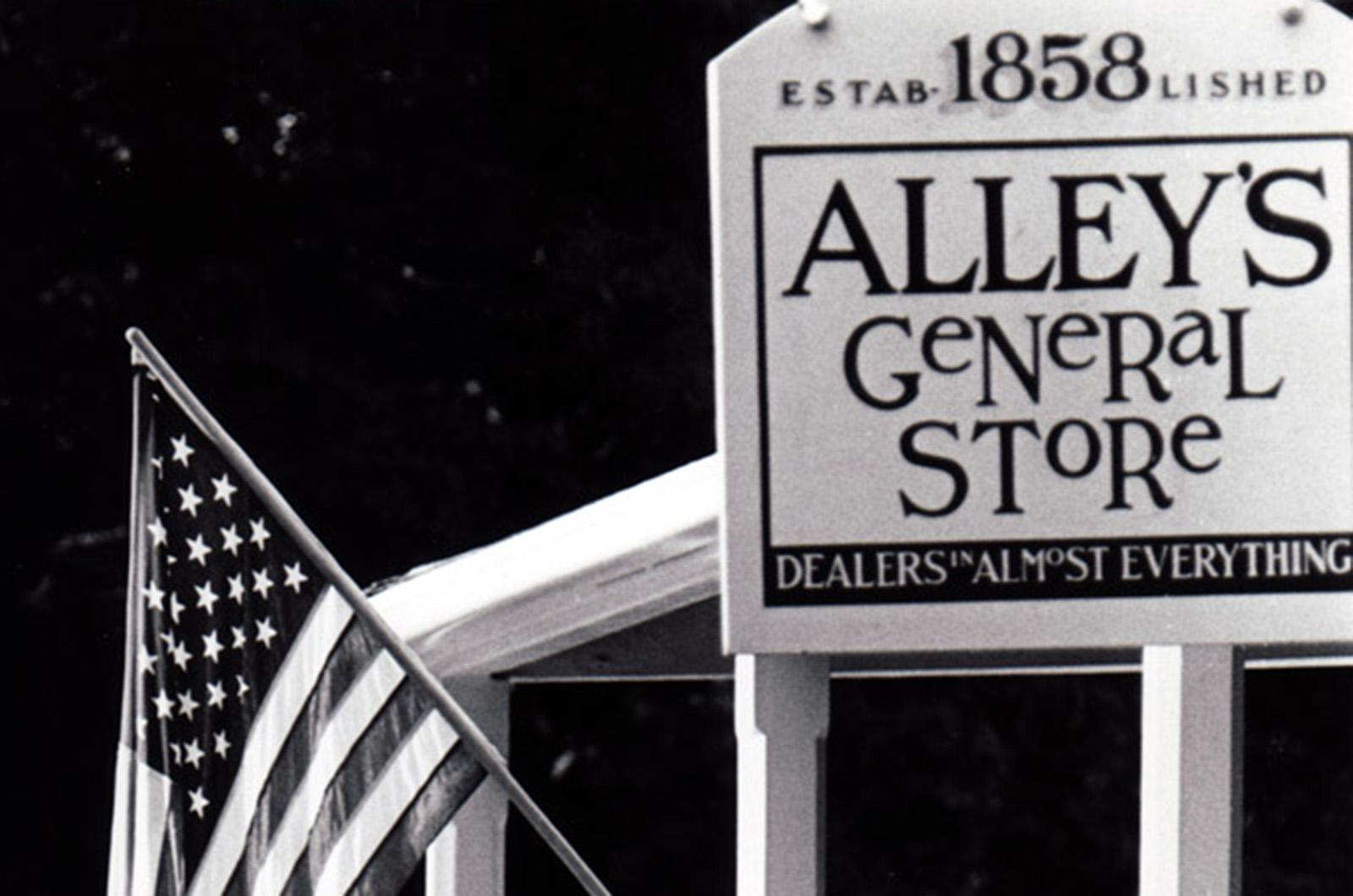From the March 20, 1964 edition of the Vineyard Gazette:
Quietly, and without fanfare, the West Tisbury general store, which has been operated for many years under the name of Albion Alley and Company, has been taken over by new management. Mr. Alley has retired from business but he retains his postmastership.
The management of the store has been taken over by three of his children, James and John Alley and Mrs. Phyllis Smith. This makes six distinct changes in the management of this business since its establishment in 1858, and to all intents and purposes the general character of the business has not changed in that period. Although the business caters to the ever-present requirements of its clientele, keeping abreast of changing times, and those changes have been many, it has remained always a general store.
It has been enlarged, both as to the building and its stock in trade, at least four times since the original proprietor, Nathan Mayhew, forced to abandon his profession of blacksmith because of failing eyesight, first hung out his sign. Now it has been enlarged yet once more with the addition of a “garden shop,” 40 by 15 feet, in which an additional display window has been installed this week. The addition is filled with tools and implements, formerly kept stored in a back shed for the most part.
The original building, a part of which was the old blacksmith shop, is a part of the present structure. The front portion, containing the groceries, was the first addition made. This enlargement coincided with the inclusion in management of the late Sanderson M. Mayhew, whose name became attached permanently to the business. It was the S. M. Mayhew & Co., and was best known as “Sanderson’s” for generations.
Later, Ulysses M. Mayhew, town official and county representative, became a partner of his brother, who retired from active participation. Previous to the purchase of the business by Mr. Alley, it had been owned and conducted by the late Charles Turner, first with a previous partner, and later with Mr. Alley, who succeeded him.
A popular gathering place, through the generations of farmers, fishermen and whalemen who lived in West Tisbury and outlying areas, the store was the scene of many a conference and gathering around the pot-bellied stove. They inspired the rhymes of Longside the Stove in Sanderson’s, which the Gazette carried in series for a number of years.
Gatherings of this sort are hardly in style in these days, and there are few farmers or fishermen — and no whalemen at all — to visit the place, even if the sawdust box and the well-polished chairs and packing cases should be restored. But a glance about the place reveals some of the original old shelving and some of the old ceiling beams, which, if they could speak, would refer fondly to the days which are gone. They witnessed such discourses and debates and they echoed the laughter which arose when the yarn spinners of the day told their stories, ‘longside the stove in Sanderson’s.
For the last several months, the old gilt gallery clock hanging on the rear wall underneath the balcony in the Edgartown Federated Church has been of no help either to the sermonizer in the pulpit or the surreptitious clock watcher in the congregation.
Last Sunday, Rev. S. Read Chatterton was able to point out, though, that the timepiece was able once more to measure the minister’s firstlies, secondlies, thirdlies and lastlies, and to offer some kind of solace to the stomach-grumblers, thanks to the E. Ingraham Company.
The company repaired the clock free of charge, a generous gesture explained by the fact that the clock was given to the church by none other than Elias Ingraham himself in 1845. Nearly twenty years before that same Elias Ingraham, then a young cabinetmaker, had come to Edgartown on a ship sailing from Hartford to Boston to take orders for furniture and clocks. On Sunday he attended church and there he met Julia Sparks Norton, a descendant of the founders of the First Church, which was to become his wife.
Years later, after he had entered into a clock-making partnership in Bristol, Conn., with his brother Andrew Ingraham, and with Elisha C. Brewster, he presented one of the firm’s most outstanding products, the gilt gallery clock, as a testament of the fortuitous meeting. The company was also famed at the time for another product, the “sharp Gothic clock”. But it was the gilt gallery model that achieved the greater eminence. A sister of the one in the Edgartown church ticks away in Independence Hall near the Liberty Bell. The Ingrahams have, of course, been closely associated with the Vineyard ever since that first fateful encounter with Julia Norton. The descendants of Elias and Julia maintained a seasonal home in Oak Bluffs down through the years, and Mr. and Mrs. William A. Ingraham are year round residents of that town now.
Compiled by Hilary Wallcox
library@vineyardgazette.com




Comments
Comment policy »